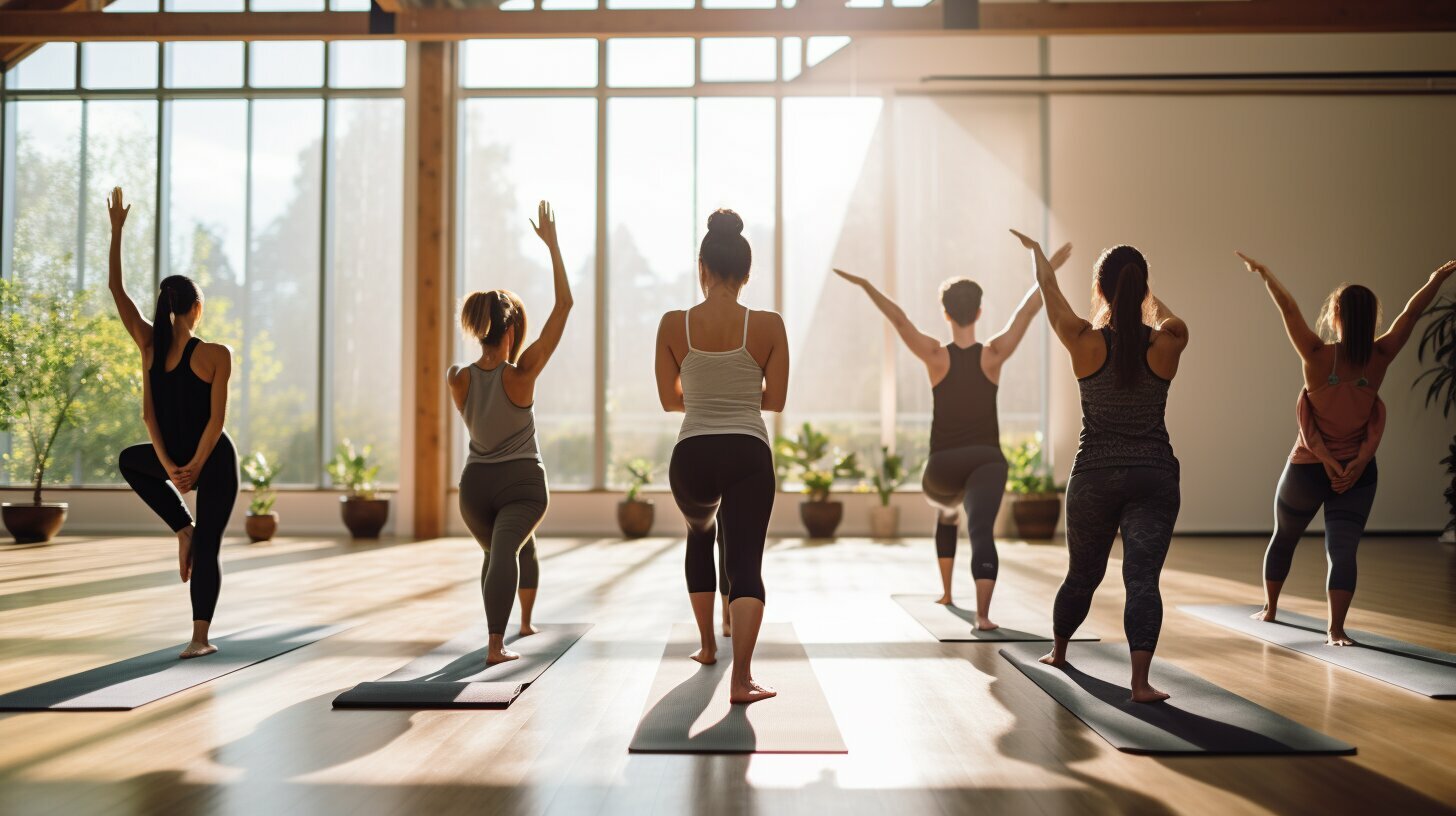If you’re an aspiring yoga instructor or a seasoned one, teaching a beginner yoga class requires a different set of skills and approach. Beginner yoga students are at different levels of fitness, flexibility and experience. It’s your job to guide them through their yoga journey, build their confidence and create a safe space where they can learn and grow.
Before you step into the studio, it’s important to have a plan to help you navigate through the class and tailor your instruction to suit your students’ needs. In this article, we will explore the essential techniques and tips for leading a successful beginner yoga class, from creating a welcoming environment to demonstrating and explaining poses.
- Leading a beginner yoga class requires a different set of skills and approach.
- Have a plan before you step into the studio.
- Create a welcoming environment for your students.
- Demonstrate and explain poses clearly and effectively.
- Offer modifications and the use of props to help beginners adapt poses.
Fostering a Welcoming Environment for Beginner Yoga Instruction
As a beginner yoga instructor, your students are likely to be a mix of ages, backgrounds and experiences. It’s essential to create a welcoming and inclusive environment to put your students at ease.
Begin by introducing yourself and getting to know your students’ names. A simple, “Hi, I’m Jane and I’ll be your yoga teacher today. What are your names?” will suffice.
It’s essential to provide a brief explanation of what your students can expect during your class. Emphasize that yoga is a non-competitive practice and encourage your students to listen to their bodies, modify poses as needed, and take breaks whenever necessary. Allowing your students to feel safe and comfortable is a key component in teaching a successful beginner yoga class.
Creating a welcoming environment also means being mindful of your body language and tone of voice. Be warm and inviting, and show genuine interest in your students’ progress. If you notice that a student seems unsure or nervous, offer a reassuring word or a gentle smile to put them at ease.
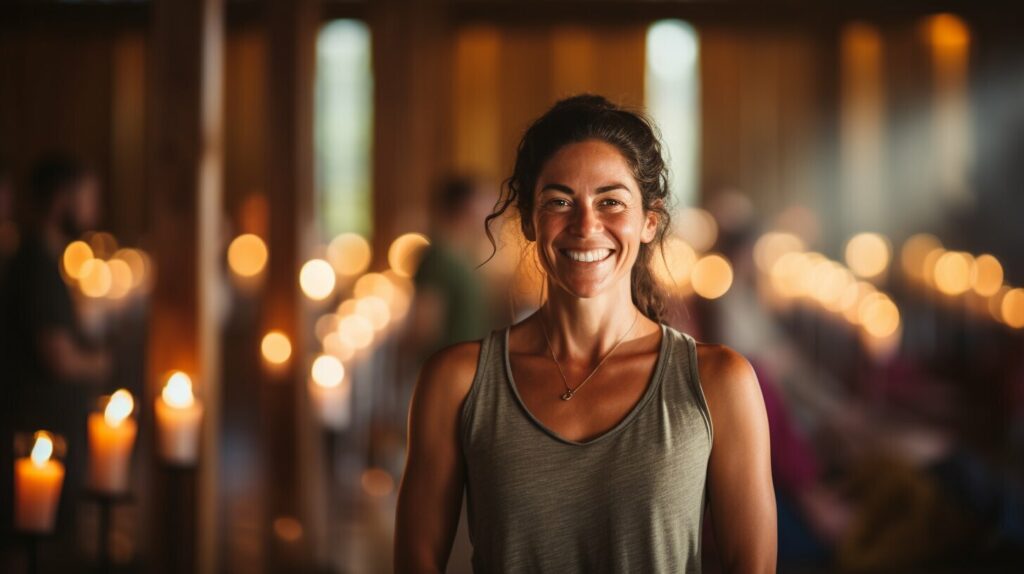
Remember, yoga is an excellent way to reduce stress and anxiety, and your students will benefit greatly from a positive and supportive environment. By creating a safe and welcoming space, you’re setting the foundation for a successful and enjoyable beginner yoga class.
Planning the Sequence
One of the most critical aspects of leading a beginner yoga class is planning a well-thought-out sequence. A good sequence can help beginners build confidence, increase flexibility and strength, and feel a sense of accomplishment. As a yoga teacher, it’s essential to create a safe and supportive environment while leading the class towards a specific goal.
Start by introducing basic yoga poses, such as Tadasana (Mountain Pose), Vrikshasana (Tree Pose), and Adho Mukha Svanasana (Downward-Facing Dog) in the beginning. These poses help to build a foundation for more advanced poses that will be introduced later in the class. It’s crucial to keep in mind that beginners may not yet be familiar with yoga poses and terminology that you use, so it’s important to explain each pose clearly and concisely.
As you progress through the class, you can introduce more intermediate and challenging poses, such as Warrior II, Triangle Pose, and Plank. Remember to lead the class in a step-by-step approach and offer modifications for different levels of flexibility.
It is also essential to consider the flow and pacing of the class. Sequencing is not just about the order of the poses; it is also about how they fit together. Begin with a warm-up phase to prepare the body and mind for the practice, and end with a cool-down phase to help the body relax and restore.
When leading a yoga class for beginners, you must take into account their physical limitations and limitations in their knowledge of yoga. Ensure the sequence is simple and easy to follow, to help them feel successful and less intimidated.
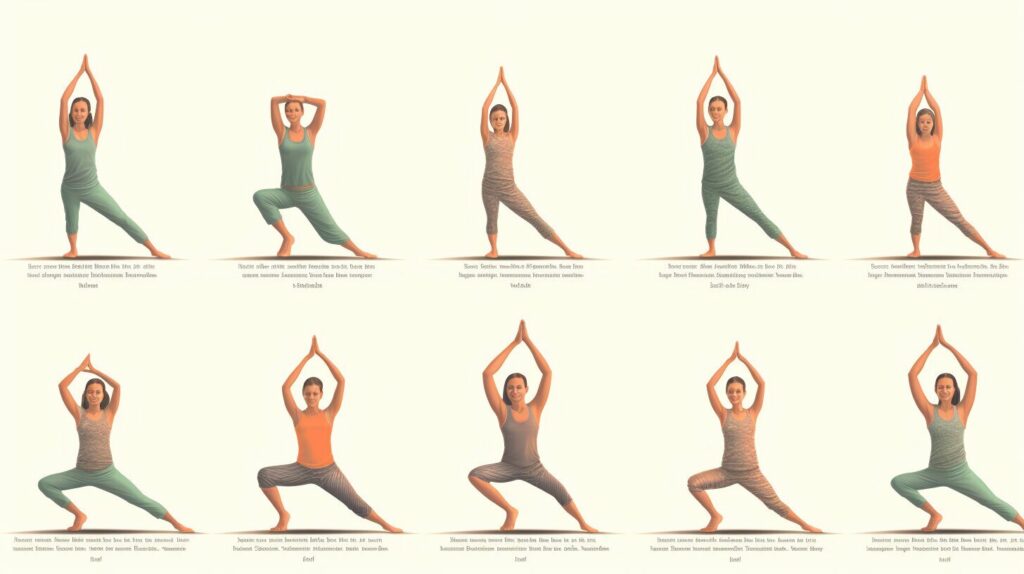
Planning a sequence may seem daunting at first, but with practice, you’ll gain confidence in creating a sequence that will provide a positive experience for your students. Focus on building strength, flexibility, and balance while keeping in mind the limitations of beginners. Use this as a starting point, and continue to modify and refine the sequence as you gain more experience.
Demonstrating and Explaining Poses
As a beginner yoga teacher, it is essential to effectively demonstrate and explain each pose. This ensures that your students can practice safely and with proper alignment. Be clear and concise with your language, providing step-by-step instructions for each pose.
When demonstrating a pose, make sure that you are visible to all students, either by walking around the room or positioning yourself at the front. Use your voice and body language to convey the essence of the pose, while offering modifications for different levels of flexibility and ability.
It is also important to offer regular cues throughout the class to help guide your students. These cues should be simple, descriptive, and easy to follow. For example, you can use phrases like “shoulders away from the ears” or “gently engage your core.”
In addition to verbal cues, physical assists can be useful in guiding your students into proper alignment. However, it is important to ask for consent before providing any hands-on adjustments, and to always be respectful of your students’ comfort levels.
Remember to be attentive to your students’ alignment and safety throughout the class, observing each student’s unique needs and limitations. By providing clear and supportive instruction, you will help your beginner students feel confident and empowered in their yoga practice.
Here are some beginner yoga poses that you can incorporate into your class:
| Pose | Benefits |
|---|---|
| Mountain pose | Improves posture and balance |
| Downward-facing dog | Stretches the shoulders, hamstrings, and calves |
| Warrior II | Increases strength and stability |
| Tree pose | Enhances balance and focus |
| Child’s pose | Relieves stress and tension |
Guiding beginner students through these poses will help them build a strong foundation for their yoga practice.
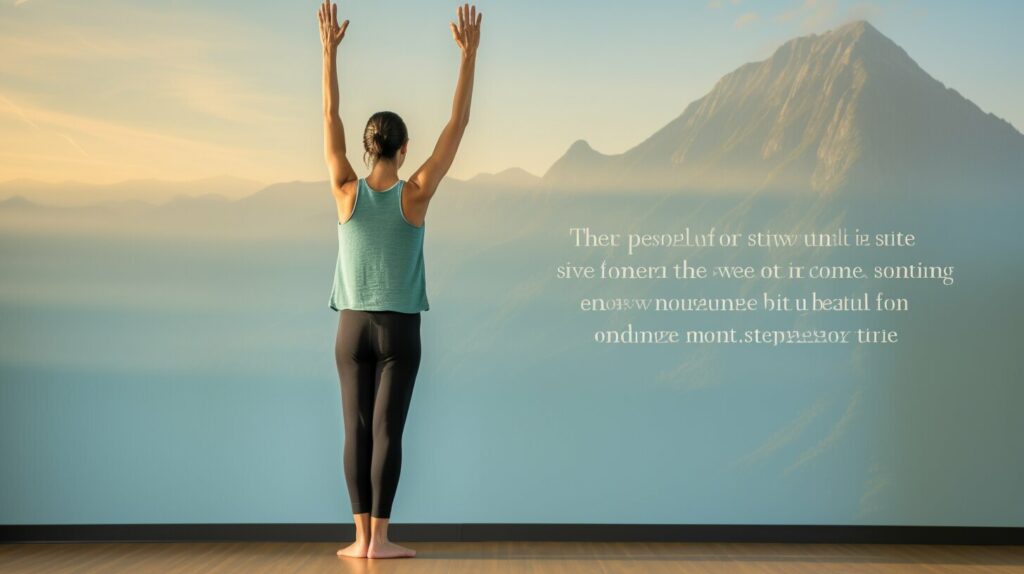
Guiding beginners through their yoga practice involves more than just demonstrating poses. The use of verbal cues and assists are equally important tools for beginner yoga instruction. Verbal cues help students to understand how to place their bodies in each pose effectively. Beginner yoga teacher tips include using clear and concise language to cue students into proper alignment and breath awareness. Encourage them to feel the stretch without pushing themselves too far.
When providing physical assists, be mindful of each student’s comfort level and never push beyond their limits. Remember that some students may be uncomfortable with close physical contact, so always ask for consent before providing any hands-on adjustments. Use gentle and respectful touches to guide them into proper alignment.
Remember, each student is unique and may require different levels of verbal and physical guidance. Pay attention to their responses and adjust your cues and assists accordingly.
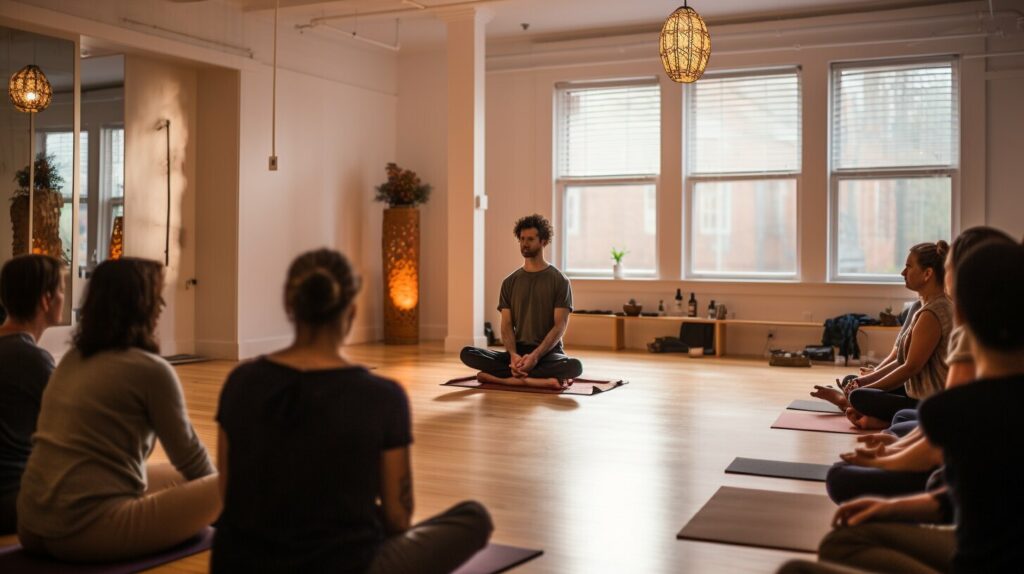
Avoid using complicated language or unfamiliar terms during your beginner yoga class. Instead, use simple and descriptive language to guide your students through each pose. This makes the class more accessible to newcomers and helps them to better understand the practice.
Always be supportive and encouraging, offering positive feedback and motivation to your students. This helps them to feel more confident and comfortable in their practice, and motivated to continue their yoga journey.
Encouraging Breath Awareness
Incorporating breath awareness into a beginner yoga class can help students deepen their practice and connect with their bodies and minds. As a teacher, it’s essential to guide students in syncing their breath with their movements, emphasizing the importance of deep, mindful breathing. Encourage students to use their breath as a tool to stay present and focused throughout the class.
One way to encourage breath awareness is to start the class with a few rounds of pranayama (breathing exercises). For beginners, simple exercises like belly breathing or alternate nostril breathing can help them connect with their breath and calm their minds.
During the class, remind students to breathe deeply and steadily, and cue them to inhale or exhale as they move into or out of different poses. Encourage them to explore how their breath affects their physical and mental experience of the practice, and to listen to their bodies’ needs.
Ending the class with a short meditation or savasana (final relaxation) can help students integrate their breath awareness into their daily lives. Invite them to focus on their breath and let go of any thoughts or distractions, allowing their minds to rest and rejuvenate.
Overall, incorporating breath awareness into a beginner yoga class can help students cultivate mindfulness, reduce stress, and enhance their overall well-being.

As a yoga instructor for beginners, it is crucial to understand that not all your students may have the same level of physical ability and flexibility. Providing modifications and the use of props can make the practice more accessible and enjoyable for everybody and help avoid potential injuries.
During the class, offer a variety of modifications for different poses, guiding your students to adjust them according to their comfort level. Encourage the use of props, such as blocks, straps, and bolsters, to enhance the experience and make each pose more achievable.
By providing modifications and props, you can make the practice more inclusive and adaptable to each student’s needs, ensuring that everybody can experience the benefits of yoga.
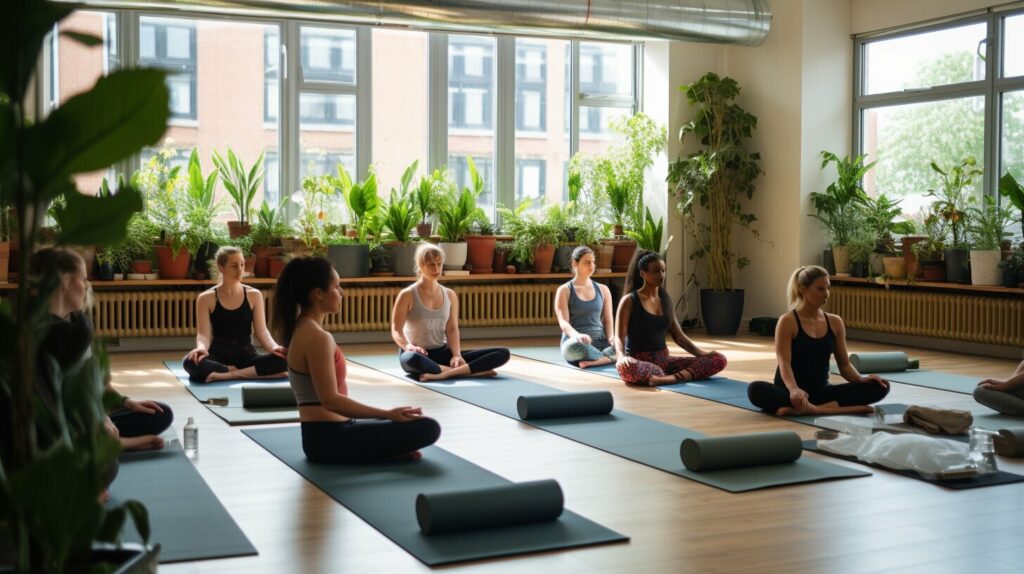
Remember that beginners may feel intimidated or overwhelmed at first, so it’s essential to provide a positive and supportive environment throughout the class. Encouraging them to listen to their bodies and honor their limits can help them feel more confident and empowered in their practice.
Cultivating Mindfulness and Relaxation
As a beginner yoga teacher, it is essential to incorporate mindfulness and relaxation techniques into your classes. This allows your students to experience the holistic benefits of yoga beyond the physical practice.
Throughout the class, remind your students to stay present and connected to their breath. Encourage them to let go of any distracting thoughts or worries, and focus solely on their practice.
Take a few moments during the class to guide your students through stillness and meditation. Encourage them to find a comfortable seated position, close their eyes, and focus on their breath. You can use soothing music or nature sounds to enhance the experience.
Another crucial component of a beginner yoga class is savasana (final relaxation). This is an opportunity for your students to fully surrender and release any remaining tension or stress. Guide them through the relaxation, encouraging them to let go of any thoughts or worries and simply be present in the moment.
By incorporating mindfulness and relaxation techniques into your class, you are providing your students with tools to manage stress and cultivate inner peace.
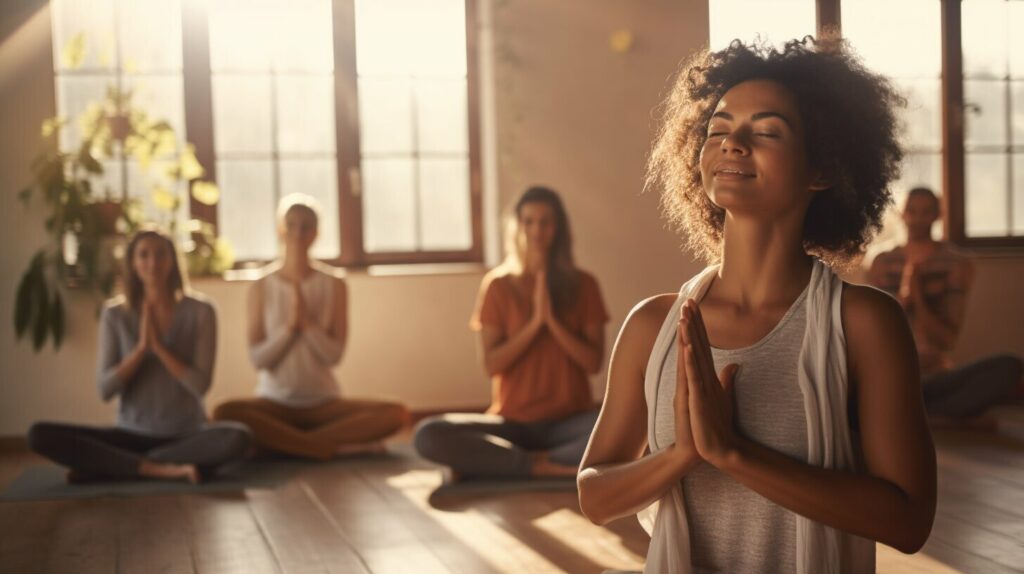
Teaching a beginner yoga class is not just about leading a physical practice. It’s also an opportunity to build connections and create a supportive community. When students feel welcomed and supported, they are more likely to stick to their practice and continue growing.
Encourage your students to support each other, whether it’s through partner poses or offering a helping hand. Consider organizing occasional social events or workshops to deepen their yoga journey and foster a sense of belonging.
“Teaching yoga is not about the teacher. It’s about the students,” says world-renowned yoga teacher, Baron Baptiste.
By focusing on building a community and supporting your students, you can create a positive and transformative experience for your beginners.
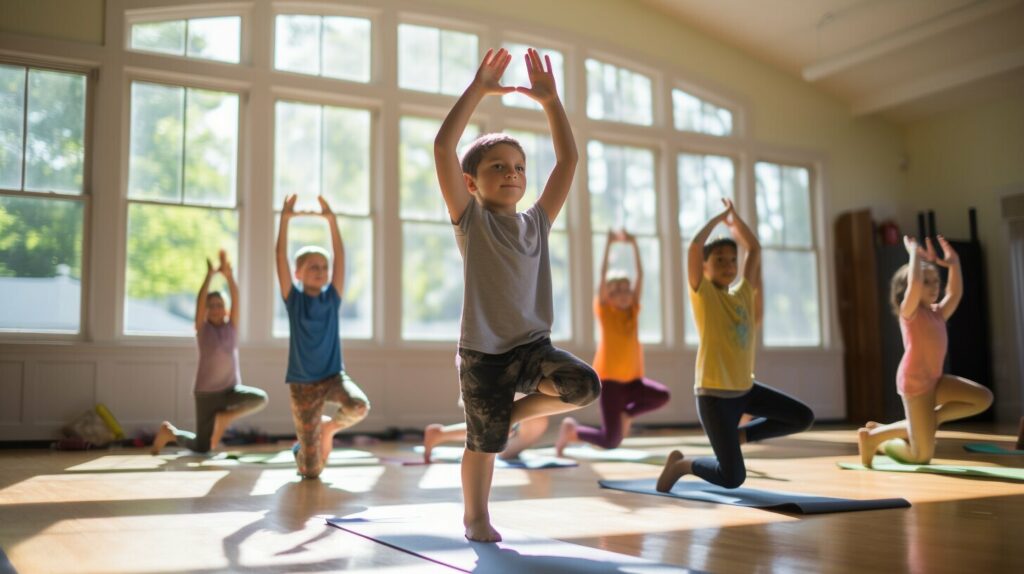
As a teacher, your role is to guide your students on their yoga journey, but also to learn from them. Embrace the opportunity to create a space where everyone can share their experiences and grow together.
Conclusion
In conclusion, leading a beginner yoga class can be a fulfilling and rewarding experience for both the teacher and the students. The key is to create a welcoming environment, plan a well-sequenced class, demonstrate and explain poses effectively, use verbal cues and assists appropriately, encourage breath awareness, provide modifications and props, cultivate mindfulness and relaxation, and foster a sense of community among your students.
By using these techniques and tips, you can guide your beginners through a safe and enjoyable yoga practice that helps them develop their strength, flexibility, and balance while nurturing their mind-body connection. Remember to stay open to feedback, continue learning and growing as a teacher, and share your passion for yoga with others.
So, how do you lead a beginner yoga class? With patience, kindness, and a deep commitment to helping others discover the transformative power of yoga. Keep practicing and sharing your gifts with the world. Namaste.
FAQ
Q: How do you lead a beginner yoga class?
A: Leading a beginner yoga class requires a combination of technical knowledge, nurturing qualities, and a genuine passion for teaching. It is important to create a welcoming and inclusive environment, plan a well-thought-out sequence, effectively demonstrate and explain poses, use verbal cues and assists, encourage breath awareness, provide modifications and props, cultivate mindfulness and relaxation, and build connection and community among your students.
Q: How do I create a welcoming environment for a beginner yoga class?
A: To create a welcoming environment, introduce yourself, get to know your students’ names, and provide a brief explanation of what to expect during the class. Emphasize that yoga is a non-competitive practice and encourage students to listen to their bodies, modify poses as needed, and take breaks whenever necessary.
Q: How do I plan a sequence for a beginner yoga class?
A: When planning a sequence for a beginner yoga class, start with basic poses and gradually introduce more challenging ones as the class progresses. Focus on building strength, flexibility, and balance while keeping in mind the limitations of beginners. It is also important to include a warm-up and a cool-down phase to prepare the body before and after the practice.
Q: How do I effectively demonstrate and explain poses in a beginner yoga class?
A: During a beginner yoga class, it is essential to use clear and concise language, provide step-by-step instructions, and offer modifications for different levels of flexibility and ability. Encourage students to ask questions, and be attentive to their alignment and safety throughout the class.
Q: How do I use verbal cues and assists in a beginner yoga class?
A: Verbal cues and assists play a vital role in guiding beginners through their yoga practice. Use simple and descriptive language to cue students into proper alignment and breath awareness. Offer verbal encouragement and reminders to help them stay engaged and focused. Physical assists should be gentle and respectful, always asking for consent before providing any hands-on adjustments.
Q: Why is breath awareness important in a beginner yoga class?
A: Breath awareness is important in a beginner yoga class because it helps students synchronize their breath with movements, facilitating a deeper mind-body connection. Remind students to listen to their breath as a way to stay present and connected throughout the class.
Q: How can I provide modifications and props for beginners?
A: Beginners may have different levels of flexibility and physical abilities. Offer modifications and the use of props to help them adapt poses to their comfort level. This ensures that everyone in the class can experience the benefits of the practice while avoiding unnecessary strain or injury.
Q: How can I incorporate mindfulness and relaxation into a beginner yoga class?
A: It is essential to incorporate mindfulness and relaxation techniques into a beginner yoga class. Guide students through moments of stillness, meditation, and savasana (final relaxation) to help them experience the holistic benefits of yoga beyond the physical practice.
Q: How can I build connection and community in a beginner yoga class?
A: Foster a sense of connection and community among your beginner students by encouraging them to support and learn from each other. Consider organizing occasional social events or workshops to deepen their yoga journey. Creating a supportive network will help beginners feel more comfortable and committed to their practice.
Q: Conclusion
A: Leading a beginner yoga class requires a combination of technical knowledge, nurturing qualities, and a genuine passion for teaching. By following the techniques and tips outlined in this article, you can create a positive and enriching experience for your beginners, helping them develop a strong foundation for their yoga practice. Keep practicing, growing, and sharing the gift of yoga with others.
